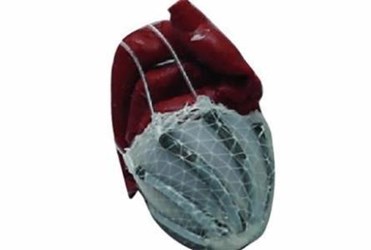Flexible Robotics Demonstrate The "Softer Side" Of Implants And Surgical Tools

Advances in soft robotics technology are showing promise in diverse applications by doing away with the sharp edges of traditional implants and surgical tools, and replacing them with more flexible materials and actuators. Scientists from Harvard and Columbia universities have devised implants that can pump the heart, or time-release targeted cancer therapies, and Massachusetts Institute of Technology (MIT) engineers have invented a series of robotic gadgets that catch and release goldfish unharmed.
Sharp objects made of rigid materials can cut or tear the body’s interior, or prompt an immune response that can damage an implant and render it ineffective, reported IEEE Spectrum. Redesigning similar tools could greatly broaden the capabilities of medical therapies, especially minimally invasive techniques that reduce recovery times and risk.
Current standards in ventricular assist devices (VADs) treat heart failure patients with a system of mechanical pumps that can do the work of the heart until a suitable transplant is made available. Harvard scientists have proposed an alternative system that uses a silicone sleeve fitted around the heart, which performs the same work with softer materials and soft pneumatic actuators that mimic heart muscle.
“The cardiac field had turned away from the idea of developing heart compression instead of blood pumping VADs due to technological limitations, but now with the advancements in soft robotics, it’s time to turn back,” said Frank Pigula, co-author of the proof-of-concept study published in Science Translational Medicine.
Recent oncology research is working to provide more targeted and precise drug delivery methods that can reduce the amount of collateral damage inflicted by highly corrosive cancer treatments, such as chemotherapy. Columbia University scientists have introduced a biocompatible robot system that uses same physical principles as a Swiss watch to deliver highly targeted doses of drugs.
A study, led by Columbia bioengineering professor Samuel Sia, demonstrated a robot made from hydrogel and embedded with iron nanoparticles that could be controlled by external sources without a power supply. Using the platform, scientists were able to deliver chemotherapy to a mouse model with cancer, a method that showed “high treatment efficacy and low toxicity” over ten days.
The final soft robotics advance highlighted by IEEE Spectrum is a gel-based robot from MIT that is both precise and gentle enough to capture a swimming goldfish and release it unharmed. The research was led by Xuanhe Zhao, whose team recently introduced a flexible optical fiber that could detect disease.
According to Zhao, his team is actively working with medical research groups to translate its robotics system into “soft manipulators such as hydrogel ‘hands’ that could potentially apply more gentle manipulations to tissues and organs during surgical operations.”
According to the Institute of Electrical and Electronics Engineers (IEEE) Robotics and Automation society, success in the soft robotics field depends on confirming feasibility of unconventional materials and redesigning actuators that meet the flexibility needs of the new technologies. With more research, the society believes that “more visionary research topics such as self-repairing, growing, and self-replicating” robots may be possible.
